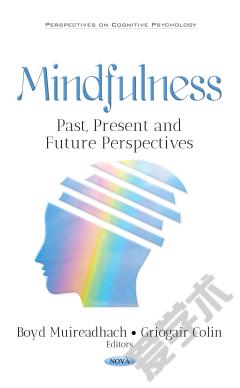Mindfulness: Past, Present and Future Perspectives
In the first chapter, Luis Garra and Santiago Barajas review the use of mindfulness in psychotic disorders, from the early questioning of the possible side effects of its application to the current adaptation of the treatment to specific disorders. They review a variety of different procedures and also focus on approaches directed at emotional dysfunction. Next, Maria João Martins, Diogo Carreiras, Miguel Bajouco, Célia Barreto Carvalho, Raquel Guiomar, António Macedo and Paula Castilho discuss negative symptoms of psychosis following the NIMH-MATRICS Consensus Statement on Negative Symptoms. Also in the second chapter, limitations of pharmacological treatments of negative symptoms are explored. In the third chapter, Sophie Revillard Kaufman and Alvin Hwang, PhD explore the part that mindfulness plays in cultural intelligence, or CQ. Keisha-Gaye N. O’Garo, Amy E. Kupper, PhD, and Christopher L. Edwards, PhD discuss current mindfulness based interventions and how they may enhance quality of life for those with a variety of medical and psychological conditions in the fourth chapter. In the fifth chapter, Olga Markič and Urban Kordeš explore the similarities and differences between two traditions of creating knowledge: learning from Buddhist techniques and using meditation as a tool for researching lived experiences. The sixth chapter by Tomoko Sugiura and Yoshinori Sugiura presents a study with the aims to discover the point in cognitive processes that leads to chronic depression. In the seventh and final chapter, Nicole G. Lancaster and Holly Hazlett-Stevens discuss research that suggests alternative intervention methods are necessary in future propagation efforts.
{{comment.content}}








 京公网安备 11010802027623号
京公网安备 11010802027623号